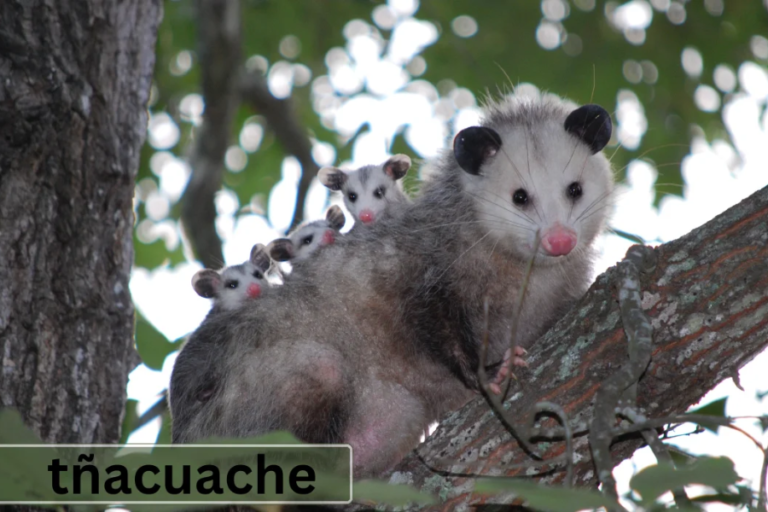Ten Amazing Facts About Nathan That Will Astound You
Gnatathan is an intriguing creature that many may not have heard of, but its unique traits and fascinating behaviors make it a standout in the animal kingdom. Because of its amazing adaptations and crucial function within ecosystems, this extraordinary creature captivates both scientists and nature enthusiasts. Expect to be astounded by what Gnatathan has to offer, regardless of your level of experience observing animals or your general curiosity about the wonders of nature. From its mysterious origins to its striking characteristics, there’s much more than meets the eye with this extraordinary species. Let’s dive into some incredible facts about Gnatathan that will leave you wanting to learn even more!
The History and Origin of Gnatathan
Gnatathan is a fascinating topic for both scientists and enthusiasts because of its mysterious past. Gnatathan’s ancestry dates back thousands of years, to densely forested areas. Its distinctive adaptations and habits have led ancient texts to describe it as being highly esteemed by local people.
These creatures are associated with resiliency in folklore because of the stories that surround them, which frequently highlight their elusiveness. Gnatathan changed along with its habitats, adapting to new surroundings while retaining its unique features. Its journey through time is a reflection of larger ecological transitions and the difficulties that many species encounter.
Modern studies continue to unravel the complexities of this remarkable being’s past, revealing insights into both its survival strategies and cultural significance across generations. Each discovery adds another layer to understanding the legacy of Gnatathan within our natural world.
Unique Characteristics of Gnatathan
Gnatathan is distinguished by its vivid coloring, which frequently displays tones of bright green and electric blue.This striking appearance is not just for show; it plays a crucial role in communication among peers. The colors can change depending on the creature’s mood or environment, making them an effective means of signaling to others.
Another fascinating trait is their unique locomotion. Rather than traditional hopping or flying, Gnatathans glide gracefully through the air using specialized membranes that stretch from their limbs. This adaptation aids them in navigating dense forests effortlessly, allowing them to escape predators and reach food sources more efficiently.
Their eyes are even more amazing. They have exceptional night vision, allowing them to see well in dim light. They can effectively hunt and avoid predators thanks to this capacity. Gnatathans also possess a highly developed sense of smell, which they use to identify food sources and scent mark to communicate with other members of their species. Because of these qualities, Gnatathan is a unique species in its ecology.
Fascinating Facts About Gnatathan’s Habitat
Gnatathan thrives in a range of settings, displaying its flexibility. It can be found in dense forests, where it blends seamlessly with the foliage. Its natural camouflage allows it to evade predators effectively. Gnatathan has a knack for choosing locations where it can thrive, from lush jungles to wetlands.
Wetlands are another favorite spot for Gnatathans. These rich ecosystems provide an abundance of food sources and shelter from harsh weather conditions. Remarkably, gnatathans frequently live close to bodies of water. They rely on these locations not only for sustenance but also for breeding purposes.
Their way of life is greatly influenced by the microclimates that their environment creates. Gnatathan takes advantage of temperature variations within its habitat to regulate its body heat. This adaptability is essential for survival in fluctuating environmental conditions. Urban environments have seen an increase in Gnatathan sightings as they adapt to human-altered landscapes, proving their remarkable resilience and versatility.
Gnatathan’s Role in the Ecosystem
As both a predator and a prey, gnatathan is essential to the environment. Through their ability to regulate insect populations, these amazing animals contribute to the preservation of environmental equilibrium. They eat bugs that can damage crops and plants since they are voracious feeders. The biodiversity and health of agriculture are supported by this natural pest control.
Furthermore, a variety of species use Gnatathan as food. They are the source of food for birds, amphibians, and tiny mammals, which together form a complicated web of life. Their presence implies environmental health; numerous species often grow where Gnatathan thrives. Thus, keeping an eye on these creatures can reveal information about the stability of the ecosystem.
Through pollination activities while feeding on nectar, Gnatathan contributes to plant reproduction, which is essential for maintaining healthy vegetation across habitats. This intricate relationship with flora and fauna illustrates the interconnectedness of life within ecosystems, emphasizing the need to protect such remarkable creatures.
The Importance of Preserving Gnatathan
Preserving Gnatathan is crucial for maintaining biodiversity. This unusual organism is essential to the health of the soil and the cycling of nutrients in its habitat. The local flora and fauna’s delicate equilibrium could be seriously upset without it. The loss of Gnatathan could lead to an increase in pest populations, which would ultimately affect plant health and agricultural yields.
Additionally, Gnatathan serves as an indicator species. Its existence or disappearance may indicate alterations in the surrounding environment. Monitoring these shifts helps us understand broader ecological trends. For instance, a decline in Gnatathan populations may indicate pollution or habitat degradation, prompting conservation actions.
Conservation efforts also protect habitats that are home to countless other species. By focusing on preserving Gnatathan, we inadvertently safeguard entire ecosystems. Public awareness is essential too. Educating communities about the importance of this fascinating creature can foster greater appreciation for nature’s delicate web of life.
By giving preservation efforts first priority, we contribute to the sustainability of our planet in the future and guarantee that future generations will be able to see amazing creatures like Gnatathan.
Misconceptions about Gnatathan
Many misconceptions surround Gnatathan. Although it’s considered a legendary creature by some, it’s actually an interesting component of our biodiversity. This misunderstanding often stems from the creature’s rarity and the limited knowledge about its ecological role.
Another widespread misconception is that Gnatathans can only be found in particular areas. While they are often associated with certain habitats, these creatures have shown remarkable adaptability to various environments. This adaptability highlights their evolutionary success and underscores the need for further research.
Individuals also think less of their intelligence. In contrast to prevalent belief, Gnatathans display intricate behaviors and social interactions that indicate a level of intellect that is rarely recognized. They are clearly not simple organisms based on their social structures and modes of communication.
Because of their size or choice of habitat, some people consider them pests. In actuality, Gnatathans serve vital roles in preserving ecological balance and should be praised for their contributions rather than ridiculed. These misconceptions hinder conservation efforts and highlight the importance of increasing public knowledge about this unique species.
How to Recognize a Wild Gnatathan
Spotting a Gnatathan in the wild requires keen observation and patience. These elusive animals might be difficult to locate since they frequently disappear into their environment. Look for habitats that are rich in moisture, like wetlands or dense forests, as these are their preferred environments.
Gnatathans favor environments with a variety and plenty of plants. Their subtle colors help them camouflage among leaves and twigs, so being observant is key. Time of day matters too; early morning or late afternoon is when they are most active. Gnatathans will dart between plants, so keep an eye out for movement.
Listening closely can also help. Their distinctive calls can be an indicator of nearby presence. If you hear soft chirps or whistles, investigate further. To avoid upsetting them, always remember to go through their surroundings calmly and with respect. Patience is essential when searching for these fascinating beings in nature’s tapestry.
Interesting Behaviors of Gnatathan
Gnatathans exhibit a variety of intriguing behaviors that set them apart from other creatures. One remarkable trait is their ability to communicate through intricate dance movements. These graceful and agile dances frequently occur during mating rituals. Such displays not only attract mates but also serve as a form of social bonding among individuals.
Another fascinating aspect is their foraging technique. Gnatathans utilize a unique method of scent-tracking, allowing them to locate food sources hidden beneath foliage or within crevices. This skill enhances their survival in competitive environments, making them efficient foragers.
Social exchanges are fascinating too. When faced with obstacles like predators or inclement weather, gnatathans band together in small groups to exhibit cooperative behavior. They efficiently share resources and depend on one another for safety. Notable for their versatility, gnatathans can alter their habits in response to seasonal variations and resource availability, which guarantees their survival in the face of changing environmental conditions.
Gnatathan: Unique Traits and Conservation Importance
Introduction
Many species are hidden in the wide field of biodiversity, existing in the shadows of more charismatic cousins. Among these is Gnatathan, a fascinating organism that deserves appreciation for its unique adaptations and critical role within its ecosystem. This article explains why Gnatathan is unique among animals by examining its traits, habitats, behaviors, and ecological relevance.
Knowing Gnatathan is more than simply a theoretical exercise; it provides understanding of the intricacy of life on Earth and emphasizes the significance of protecting lesser-known species that maintain the natural balance.
What is Gnatathan?
Overview of Gnatathan
Within a certain biological class, gnatathans are fascinating creatures that are frequently distinguished by their unique shape and behavior. While scientific classification can vary, Gnatathan typically belongs to a group that showcases diverse traits suited to its environmental needs.
Taxonomy
To fully appreciate Gnatathan, it’s essential to understand its taxonomic classification:
- Kingdom: Animalia
- Phylum: Arthropoda
- Class: Insecta
- Order: Diptera
- Family: Chironomidae
- Genus: Gnatathan
This classification puts Gnatathan in the family of midges, which are small flies that are frequently found in aquatic habitats, within the larger context of insects.
Unique Characteristics of Gnatathan
Gnatathan is known for its unique traits that stand out among similar organisms. These characteristics contribute not only to its survival but also to its role within the ecosystem.
Distinctive Morphology
- Size: Gnatathan is relatively small, usually measuring between 2-5 millimeters in length.
- Coloration: They display a variety of colors, often exhibiting iridescent hues that help them blend into their surroundings.
Adaptations
Gnatathans have evolved specific adaptations that enable them to thrive in their environments:
- Camouflage: Their coloration provides excellent camouflage against predators.
- Feeding Mechanisms: Equipped with specialized mouthparts, Gnatathans can efficiently extract nutrients from various food sources, including plant materials and organic debris.
Habitats and Distribution
Gnatathans inhabit diverse environments, showcasing remarkable adaptability. Common habitats include:
- Freshwater Ecosystems: Lakes, ponds, and wetlands are prime locations for Gnatathan, as they provide abundant food sources.
- Forested Areas: Gnatathans often reside in regions with dense vegetation, utilizing the foliage for camouflage and protection.
Ecological Role
Gnatathan plays a critical role in its ecosystem, serving as both predator and prey. By consuming organic matter and detritus, they contribute to nutrient cycling and soil health. Additionally, Gnatathans serve as a food source for various predators, including birds and amphibians.
Conservation Importance
Despite their significance, Gnatathan populations face threats from habitat loss, pollution, and climate change. For ecosystem health and biodiversity to be maintained, their habitats must be protected. Raising awareness about the importance of Gnatathan can inspire conservation efforts aimed at preserving this unique organism and its environment.
Conclusion
Gnatathan is a remarkable organism that exemplifies the beauty and complexity of nature. Understanding its characteristics, ecological role, and conservation needs can help foster greater appreciation for lesser-known species. By recognizing the significance of Gnatathan, we can take steps to protect our planet’s biodiversity and ensure a healthy environment for future generations.
If you want to learn more information Please Visit:BlogVibe.co.uk






